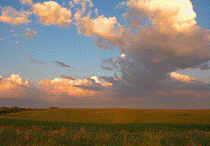North American Prairie Conference
Date of this Version
2004
Abstract
Northern grassland faunas that were most affected by glaciation, induced climate shifts include more than 225 endemic phytophagous bugs (leafhoppers and related insects, the Homoptera,Auchenorrhyncha) on Canadian plains, and another 275 in Pacific Northwest intermontane grasslands. These exceptionally rich endemic faunas include many insect,plant associations common to related species of bugs, suggesting adaptation to certain environmental factors that persisted over millions of years despite radical environmental changes induced by glacial advances and retreats. Smaller, but significant, endemic faunas of Homoptera,Auchenorrhyncha in other glaciated areas also reveal patterns of ancient ecological areas. Groups of these grassland,endemic bugs are common to grassland areas, which are equivalent to "ecoregions." Significant differences between these bug,defined areas and currently defined ecoregions suggest that our present definitions are insufficiently accurate for establishing conservation priorities.


Comments
Published in Dave Egan & John A. Harrington, editors, Proceedings of the 19th North American Prairie Conference: The Conservation Legacy Lives On..., University of Wisconsin-Madison, August 8-12, 2004 (Proceedings of the North American Prairie Conference, 19), Madison, WI: University of Wisconsin-Madison, 2004.